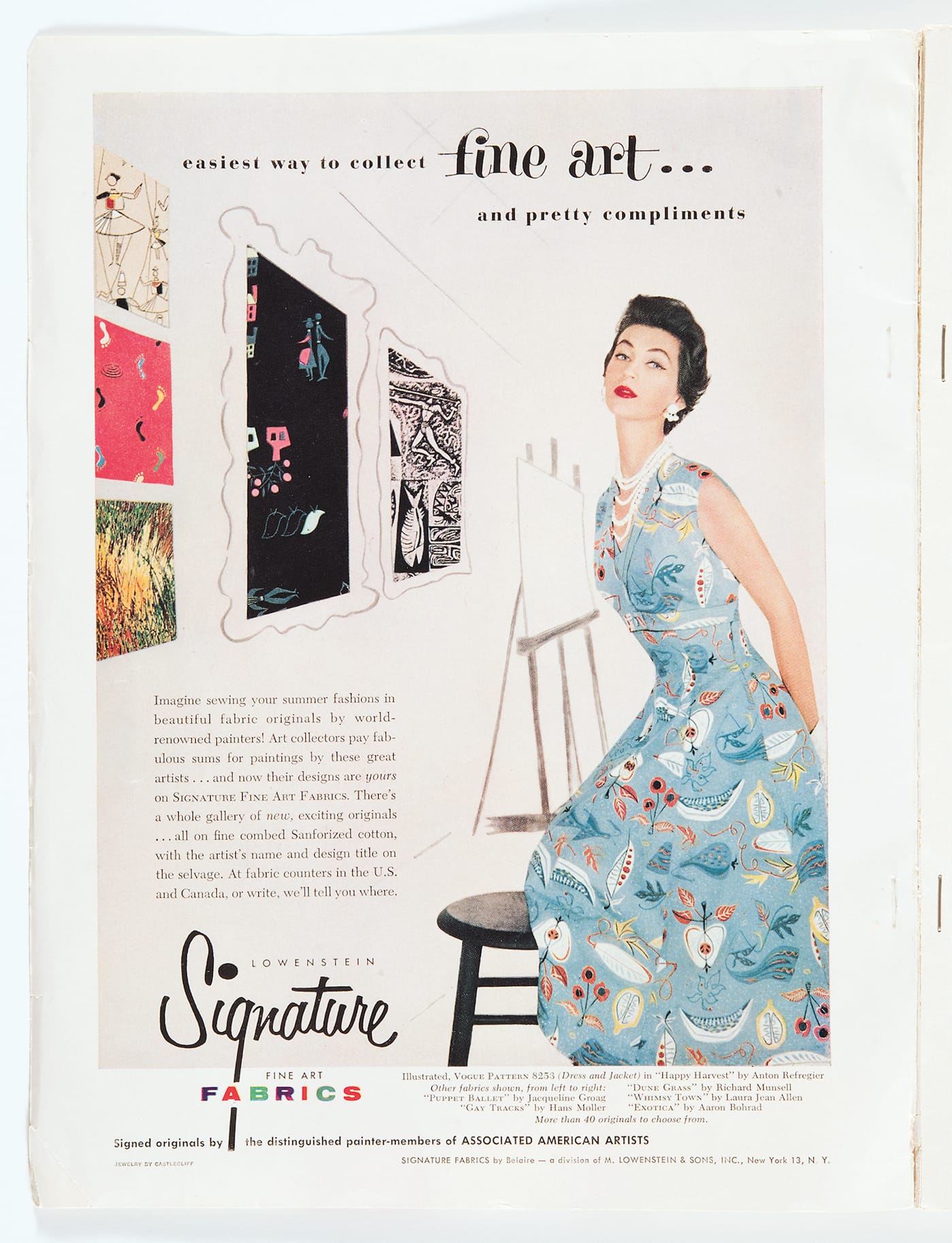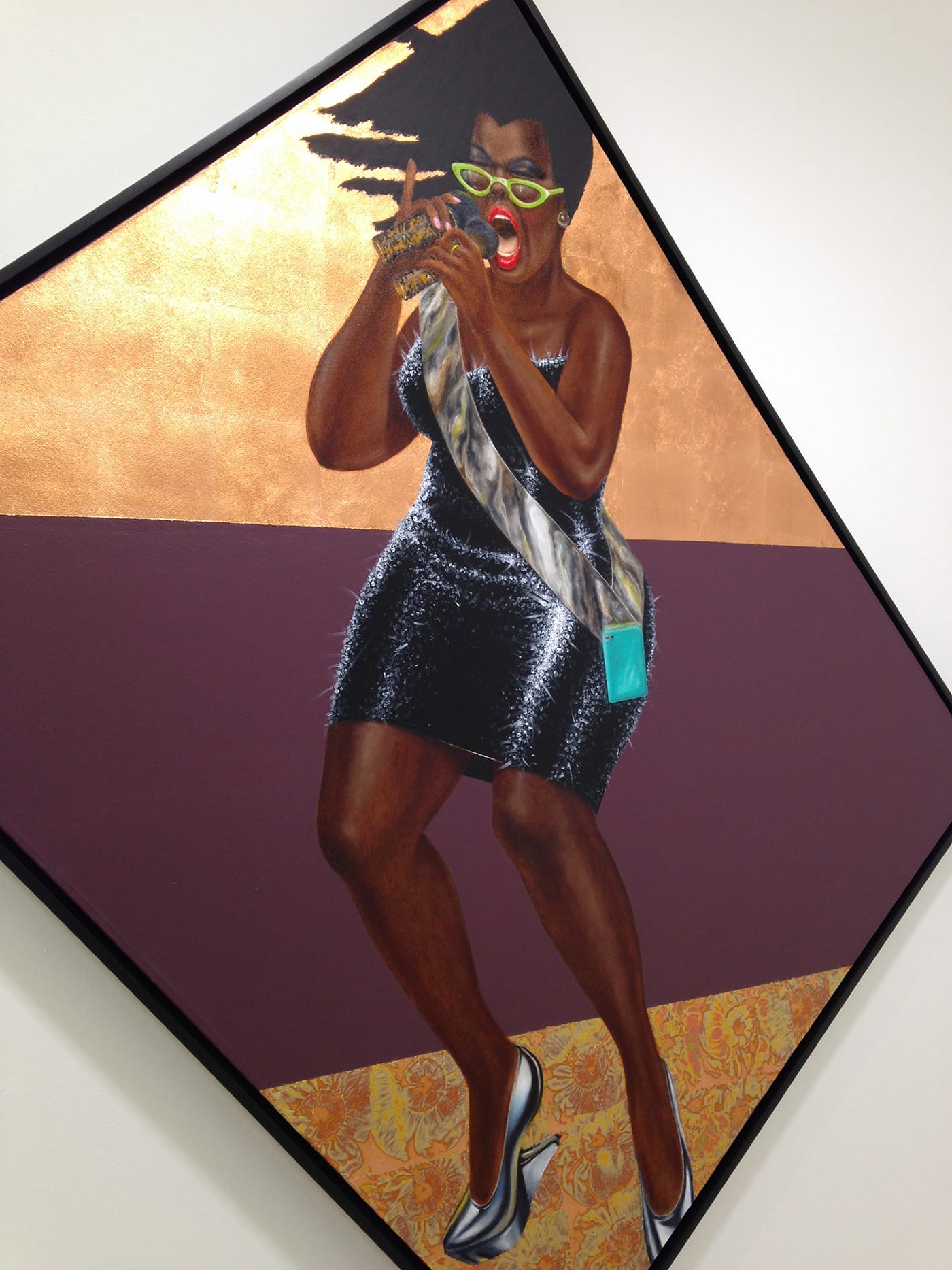ArtRx NYC
This week, a lecture details the history of fan painting, a panel ponders colonialism's influence on indigenous choreography, Barkley Hendricks's solo show heads into its last days, and more.

This week, a lecture details the history of fan painting, a panel ponders colonialism’s influence on indigenous choreography, Barkley Hendricks’s solo show heads into its last days, and more.

Affordable Art from Associated American Artists
When: Opens Tuesday, April 19
Where: Grey Art Gallery (New York University, 100 Washington Square East, Greenwich Village, Manhattan)
If art these days is a multibillion-dollar, multifaceted industry, it’s due in part to the work of Associated American Artists (AAA), a company that strove to make art available to middle-class Americans by selling affordable prints by the likes of Thomas Hart Benton and Grant Wood, as well as textiles and ceramics. This “first comprehensive and critical overview” of the work of the unabashedly populist AAA should be eye-opening and, I suspect, resoundingly relevant.

Painted Pleats
When: Wednesday, April 20, 6:30–8pm
Where: Cooper Hewitt, Smithsonian Design Museum (2 East 91st Street, Upper East Side, Manhattan)
Are you aware that there’s a museum in London dedicated exclusively to the art of the fan? While carrying a folded fan might be an eccentric affectation today, for centuries they were the aristocratic accessory for subtle flirting and pre-air-conditioning cooling. And they were treated as a high art. Jacob Moss, the curator of the Fan Museum, will deliver a talk on 200 years of fan painting history, illustrated with examples from the Cooper Hewitt and the London institution. —AM


On Memory and Place
When: Wednesday, April 20, 7–8pm (RSVP required)
Where: Storefront for Art and Architecture (97 Kenmare Street, Nolita, Manhattan)
It seems fitting to spend 4/20 at a discussion of cultural memory and forgetfulness, occurring at the opening of Fazal Sheikh’s site-specific installation, which covers the facade of Storefront’s space with a monumental image of the Israeli Separation Wall. The speakers will tackle issues of historical memory and place in the context of the Israeli-Palestinian conflict, surrounded by photographs taken by Sheikh over the past 15 years. His work shows landscapes devastated during the 1948 and 1967 wars and the human lives impacted by the conflict, each accompanied by excerpts of interviews Sheikh conducted. —CV

The Peacock in Art
When: Thursday, April 21, 6:30pm
Where: The Victorian Society New York (232 East 11th Street, East Village, Manhattan)
The peacock has played a long and varied role in the history of art. The animal was a favored trope of the Aesthetic Movement — a symbol of beauty and immortality (the ancient Greeks believed that peacock flesh was incorruptible) — while today, a Google search demonstrates that peacock feathers are believed to be a symbol of pride and bad luck. On Thursday, Laura Vookles, the chief curator of collections at the Hudson River Museum, will trace our “love-hate relationship” with the peacock from ancient times to the present. Vookles’s talk will refer to work from Strut: The Peacock and Beauty in Art, an exhibition held at the Hudson River Museum in 2014. —TM


Last Chance: Barkley Hendricks
When: Ends Saturday, April 23
Where: Jack Shainman Gallery (524 West 24th Street, Chelsea, Manhattan)
Every single painting in Barkley L. Hendricks’s current show is jaw-droppingly good. It’s some combination of the subjects themselves — who are mesmerizingly defiant, even when they’re in the crosshairs — and the way Hendricks paints them: with pinks so bright they blind or shadows so dark they obscure, with matte and mottled or shiny textures. Hendricks offers a bracingly honest cross section of black life that leaves me wanting more.

Theater Without Actors
When: Opens Saturday, April 23
Where: FiveMyles (558 St. Johns Place, Crown Heights, Brooklyn)
Hanne Tierney, the founder of FiveMyles gallery, makes theater without actors. In her latest endeavor, two puppets stand in for Alice B. Toklas and Gertrude Stein, whose movements are controlled by a “robot brain,” which transmits messages to a sculpture–cum–machine, which pulls the performers’ strings. In her subject, Tierney borrows from the past; in her erasure of humans, she looks to the future.

A Street-Performing Japanese Playwright
When: Saturday, April 23 & Sunday, April 24, 4pm
Where: MoMA PS1(22-25 Jackson Avenue, Long Island City, Queens)
Shūji Terayama, a Japanese avant-garde artist who gained recognition in the 1960s, became known for performing masked plays on the street, confronting taboos and stereotypes in the process and ambiguously mixing fact and fiction. As part of Tobias Madison and Matthew Lutz-Kinoy’s larger project that researches Terayama’s creative work — which spans film, photography, theater, and poetry — the two artists will restage his 1967 play Kegawa no Marii, about a transvestite parent living with his teenage son. While the restaging will not be an exact replication, a preview of the colorful, trippy set designs and costumes promises a channeling of Teryama’s imaginative spirit. —EWA


The New Global Indigenous
When: Monday, April 25, 6–8pm (RSVP required)
Where: Vera List Center for Art and Politics (The New School, 66 West 12th Street, Greenwich Village, Manhattan)
As we continue to grapple with the legacy of colonialism and reckon with ongoing mass displacements, this evening’s panel asks how such movements of people — some willful, many coerced — can inform artistic practices, specifically dance, and how notions of indigeneity can be conveyed through choreography. Among the participants are three particularly well-qualified practitioners: Maori choreographer Jack Gray, Yup’ik choreographer Emily Johnson, and the Mohawk conceptual artist Alan Michelson. —BS

Muscle Memory and the Moving Image
When: Monday, April 25, 7pm ($30)
Where: Wythe Hotel (80 Wythe Avenue, Williamsburg, Brooklyn)
This fundraiser for Syrian Armenian refugees brings together work by a great group of Armenian filmmakers and artists, including Atom Egoyan, Sonia Balassanian, Melissa Boyajian, Jacob Halajian, and Emily Mkrtichian & Anahid Yahjian. Curated by Caroline Partamian, the event happens the day after the Armenian Genocide Commemoration (April 24), and I will be there to provide some opening remarks. The short films touch on a topic that’s at the core of Partamian’s curatorial practice: insight into an individual’s memory through movement and the actions associated with reliving emotions, including loss, fear, and nostalgia. —HV
* * *
With contributions by Elisa Wouk Almino, Allison Meier, Tiernan Morgan, Benjamin Sutton, Hrag Vartanian, and Claire Voon




